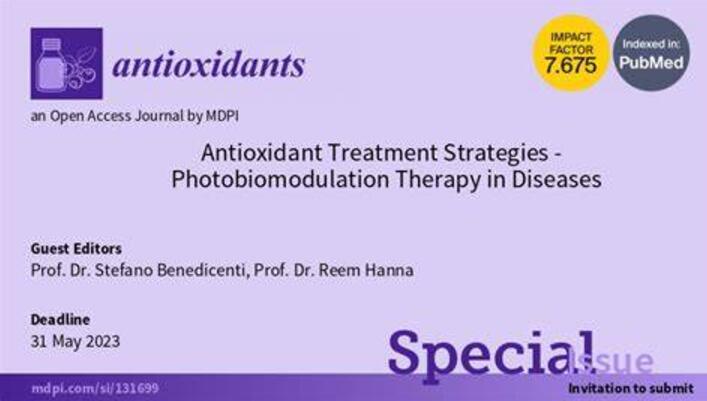Aerobic Exercise Protects against Cardiotoxin-Induced Skeletal Muscle Injury in a DDAH1-Dependent Manner
IF 6
2区 医学
Q1 BIOCHEMISTRY & MOLECULAR BIOLOGY
引用次数: 0
Abstract
Dimethylarginine dimethylaminohydrolase 1 (DDAH1) is a critical enzyme that regulates nitric oxide (NO) signaling through the degradation of asymmetric dimethylarginine (ADMA). Previous studies have revealed a link between the beneficial effects of aerobic exercise and the upregulation of DDAH1 in bones and hearts. We previously reported that skeletal muscle DDAH1 plays a protective role in cardiotoxin (CTX)-induced skeletal muscle injury and regeneration. To determine the effects of aerobic exercise on CTX-induced skeletal muscle injury and the role of DDAH1 in this process, wild-type (WT) mice and skeletal muscle-specific Ddah1-knockout (Ddah1MKO) mice were subjected to swimming training for 8 weeks and then injected with CTX. In WT mice, swimming training for 8 weeks significantly promoted skeletal muscle regeneration and attenuated inflammation, oxidative stress, and apoptosis in the gastrocnemius (GA) muscle after CTX injection. These phenomena were associated with increases in the protein expression of PAX7, myogenin, MEF2A, eNOS, SOD2, and peroxiredoxin 5 and decreases in iNOS expression in GA muscles. Swimming training also decreased serum ADMA levels and increased serum nitrate/nitrite (NOx) levels and skeletal muscle DDAH1 expression. Interestingly, swimming training in Ddah1MKO mice had no obvious effect on CTX-induced skeletal muscle injury or regeneration and did not repress the CTX-induced inflammatory response, superoxide generation, or apoptosis. In summary, our data suggest that DDAH1 is important for the protective effect of aerobic exercise on skeletal muscle injury and regeneration.有氧运动以 DDAH1 依赖性方式保护心脏毒素诱导的骨骼肌损伤
二甲基精氨酸二甲基氨水解酶 1(DDAH1)是一种通过降解不对称二甲基精氨酸(ADMA)来调节一氧化氮(NO)信号传导的关键酶。以往的研究表明,有氧运动的有益作用与骨骼和心脏中 DDAH1 的上调有关。我们曾报道骨骼肌 DDAH1 在心脏毒素(CTX)诱导的骨骼肌损伤和再生中发挥保护作用。为了确定有氧运动对 CTX 诱导的骨骼肌损伤的影响以及 DDAH1 在这一过程中的作用,我们对野生型(WT)小鼠和骨骼肌特异性 Ddah1 基因敲除(Ddah1MKO)小鼠进行了为期 8 周的游泳训练,然后注射 CTX。在 WT 小鼠中,游泳训练 8 周可显著促进骨骼肌再生,并减轻注射 CTX 后腓肠肌(GA)的炎症、氧化应激和细胞凋亡。这些现象与 GA 肌肉中 PAX7、myogenin、MEF2A、eNOS、SOD2 和过氧化物酶 5 蛋白表达的增加以及 iNOS 表达的减少有关。游泳训练还降低了血清中 ADMA 的水平,提高了血清中硝酸盐/亚硝酸盐(NOx)的水平和骨骼肌 DDAH1 的表达。有趣的是,Ddah1MKO 小鼠的游泳训练对 CTX 诱导的骨骼肌损伤或再生没有明显影响,也没有抑制 CTX 诱导的炎症反应、超氧化物生成或细胞凋亡。总之,我们的数据表明,DDAH1 对有氧运动对骨骼肌损伤和再生的保护作用非常重要。
本文章由计算机程序翻译,如有差异,请以英文原文为准。
求助全文
约1分钟内获得全文
求助全文
来源期刊

Antioxidants
Biochemistry, Genetics and Molecular Biology-Physiology
CiteScore
10.60
自引率
11.40%
发文量
2123
审稿时长
16.3 days
期刊介绍:
Antioxidants (ISSN 2076-3921), provides an advanced forum for studies related to the science and technology of antioxidants. It publishes research papers, reviews and communications. Our aim is to encourage scientists to publish their experimental and theoretical results in as much detail as possible. There is no restriction on the length of the papers. The full experimental details must be provided so that the results can be reproduced. Electronic files and software regarding the full details of the calculation or experimental procedure, if unable to be published in a normal way, can be deposited as supplementary electronic material.
 求助内容:
求助内容: 应助结果提醒方式:
应助结果提醒方式:


